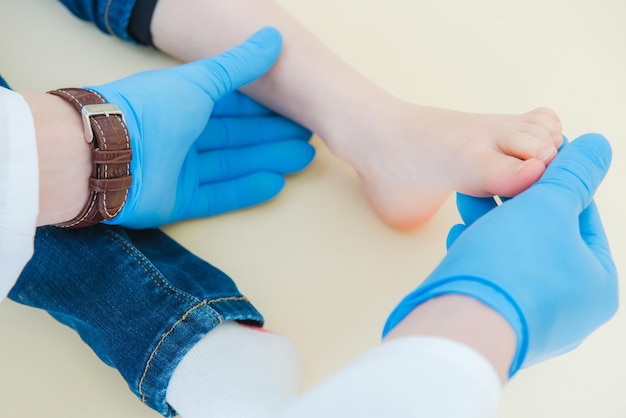Have you ever had a bunion or are you now suffering from one? Yes, you’re not alone. More than 85 million Americans have bunions, as reported in the Journal of Podiatry Sports & Therapy. This applies mainly to women, as they are more likely to develop them due to wearing high heels, which cause the foot bones to push out of alignment.
Bunionectomy may be needed to correct the problem if it gets worse. Unfortunately, bunions are as bad as they are, but there are several things you can do to help avoid or lessen their severity once you get them.
Bunions are a painful bony growth on the foot.
Many people ask what a Bunion actually is…
A bunion is a bony bump on the joint connecting your big toe to your foot that can be painful. The experts are not completely sure what causes bunions, but they believe that they may be due to arthritis, genetics, poor foot structure, or one leg being longer than the other.
Here are 5 tips to help you avoid developing bunion:
Many bunions begin as small red, swollen lumps, which, in some cases, can become so painful that it is difficult to wear shoes or to walk. You can help prevent bunions from forming by doing everything you can to prevent them from forming in the first place. I was informed of this advice from Healthline, and I believe it is extremely valuable.
1.) Wear comfortable shoes–
To help prevent bunions, it is critical that you wear the appropriate footwear. Heels less than 1-2 inches, good arch support, and shoes that are a little loose on your foot are the best options. While a lace-up shoe limits your foot’s forward movement, thus relieving pressure on your big toe joint, slip-on shoes do not.
When you buy your shoes, they should feel comfortable.
Wearing uncomfortable shoes is not what you deserve, not what you should have to put up with. Before you buy them, be sure to walk around in them for a while to ensure they fit well. You should be able to wiggle your toes in properly fitting shoes.
Wearing high heels occasionally is fine, but it is not advisable to wear them on a daily basis.
When it comes to footwear, wedges, platform shoes, and wedge heels distribute your weight more evenly than stilettos, which can cause foot fatigue and pressure on the balls of your feet.
2.) Purchase shoes during the day–
The most suitable time to hunt for shoes is when it is dark out. You tend to have larger feet during the day and, as a result, at night your feet are largest. Shoes bought in the morning may be too tight for you at night.
Use Achilles Foot & Ankle inserts to keep your feet positioned correctly in your shoes and to guarantee proper support.
Over-the-counter or prescription orthotics should be worn if you have fallen arches or flat feet. These are essential for ensuring your foot is properly aligned and supported. also helps redistribute your weight on your foot with inserts and orthotics. Toe splints that keep your big toe straight, while also allowing you to walk, are also available. Please schedule an appointment with any of our podiatrist to see what the best option of orthotics are for your feet.
3.) Aim to maintain a healthy weight–
When you walk, the weight of your body puts pressure on your feet. It is therefore more difficult for overweight people to use their feet than normal-weight people because their foot and big toe joints are under more pressure than they should be. When the joint in the toe is under stress, there is a greater chance of developing a bunion or developing a painful, inflamed joint.
4.) Keep your feet well groomed–
When your feet are tired and aching, soak them in warm water with Epsom salt, which will help relieve pain and relax your muscles. Apply our Achilles Formulated Diabetic Moisturizing Lotion on them, and massage them frequently. Give them a few minutes to recuperate and then prop them up. Even if you’re paying close attention to your feet, they will tend to do a better job of caring for you if you take good care of them.
Bunions are more likely if you have family members with the condition.
because your arch supports most of your weight, your foot is misaligned.
your ankles have slipped over your feet (flat feet)
Your job requires a lot of standing, like rheumatoid arthritis.
A prescription for treating bunions.
However, you cannot get rid of bunions unless you get surgery, but you can make your bunions less painful and less painful over time by doing the following:
5.) Shoe footwear must allow your toes and feet to move comfortably and while leaving your heels no higher than two inches–
Put in padding to relieve inflammation and cut down on the amount of pain.
To realign the joint while you sleep, wear a night splint.
Reduce joint inflammation by getting a cortisone injection.
Dr. James B. Baldwin, III, DPM, FACPM is a podiatric physician, surgeon, and specialist of the foot and ankle dedicated to providing state-of-the-art medical and surgical care to patients of all ages. He is the founder and managing partner of Achilles Foot and Ankle Center.
WE CAN HELP YOU FIX YOUR BUNIONS!
While new shoes and prescription orthotics are a start, bunion splints can be another effective option. Using a combination of cushioning and strapping, we are able to reposition the foot for proper weight distribution. This relieves pain and strain on the affected joint.
In some cases, surgical intervention is necessary to maintain mobility and relieve intense discomfort. Depending on the specific cause of the bunion, our team will determine the best procedure. The goals of surgery are to reposition the toe, eliminate the bump, and address any joint and/or tendon issues that are present.
At Achilles Foot and Ankle Center, you’ll receive star treatment by leaders in the field of podiatry. Our foot doctors are dedicated to ending your foot pain through expert and effective treatment. So, call us today to schedule an evaluation. Dial (804) 273-1717, or simply fill out our handy request form online.






